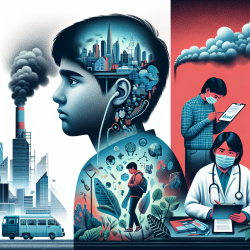The COVID-19 pandemic has dramatically reshaped the landscape of health and education, underscoring the importance of integrating human rights into our responses to health emergencies. A recent research paper titled
Toward Human Rights-Consistent Responses to Health Emergencies offers valuable insights that practitioners, especially those in educational settings, can implement to improve their preparedness and response strategies. Here's how you can leverage these findings to enhance your skills and support your school community effectively.
1. Understanding the Core Capacities and Obligations
The research highlights the intersection between the right to health and the International Health Regulations (IHR). Key takeaways include:
- Core Obligations: Ensuring non-discriminatory access to health facilities, providing essential drugs, and adopting a national public health strategy.
- Core Capacities: Developing capacities to detect, assess, notify, and respond to public health risks effectively.
By understanding these core obligations and capacities, you can better advocate for and implement policies that uphold the right to health in your school.
2. Enhancing School Preparedness
The study underscores the need for robust health systems to manage infectious disease outbreaks. For schools, this translates to:
- Developing Comprehensive Health Plans: Create and regularly update a school health emergency plan that aligns with the IHR's core capacities.
- Training Staff: Ensure all staff are trained in health emergency preparedness and response, including the use of personal protective equipment (PPE) and emergency protocols.
- Ensuring Accessibility: Make sure health facilities and services are accessible to all students, especially those with disabilities or from marginalized communities.
3. Promoting Human Rights in Health Responses
The research advocates for integrating human rights into health emergency responses. In a school setting, this means:
- Equitable Access: Ensure all students have equal access to health services, regardless of their socio-economic status or background.
- Privacy and Dignity: Respect the privacy and dignity of students during health interventions, such as screenings and treatments.
- Informed Consent: Obtain informed consent from students or their guardians before administering any health services.
4. Encouraging Further Research and Collaboration
To stay ahead of future health emergencies, it's crucial to engage in continuous research and collaboration. Here are some steps you can take:
- Stay Informed: Keep up with the latest research and guidelines from reputable sources like the World Health Organization (WHO) and the Centers for Disease Control and Prevention (CDC).
- Collaborate: Work with local health authorities, other schools, and organizations like TinyEYE to share resources and best practices.
- Advocate: Advocate for policies that support the integration of human rights into health emergency responses at the local, state, and national levels.
Conclusion
The COVID-19 pandemic has highlighted the critical need for schools to be prepared for health emergencies. By implementing the findings from the research on human rights-consistent responses to health emergencies, practitioners can enhance their skills, improve school preparedness, and ensure the health and well-being of all students. To read the original research paper, please follow this link:
Toward Human Rights-Consistent Responses to Health Emergencies.










